Secret Europe: 14 Underrated European Cities You Need To Visit
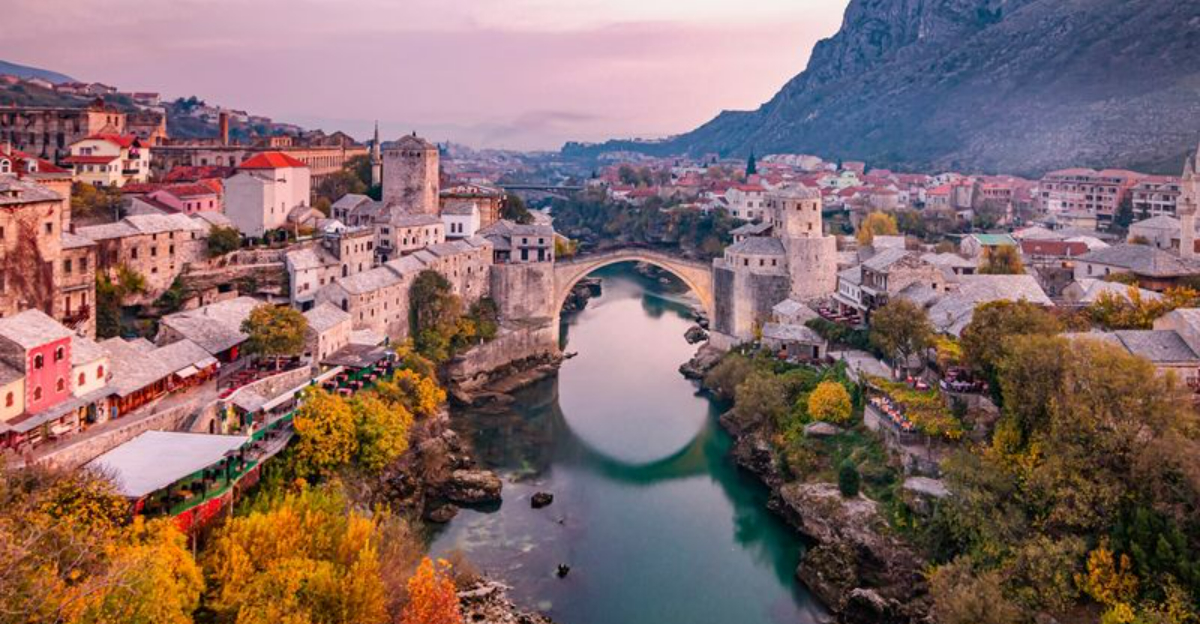
Everyone knows Paris and Rome, but Europe has so many quieter gems that don’t make the usual lists. I’ve found spots where the streets feel alive with local life, not just tourists, and where history and beauty come without the crowds.
From medieval towns to breathtaking coastlines, these 14 underrated European cities are ready to surprise you – and maybe become your new favorites.
1. Český Krumlov, Czech Republic
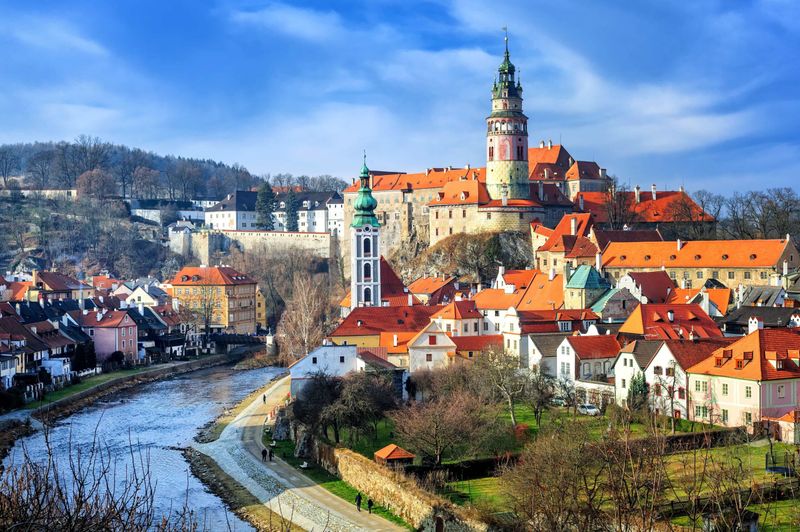
Nestled in a bend of the Vltava River, this fairytale town looks straight out of a storybook with its orange rooftops and towering castle. Walking through its cobblestone streets feels like traveling back to medieval times.
The UNESCO-protected old town remains remarkably preserved, with buildings dating back to the 14th century. You can float down the river on a raft or kayak for a unique perspective of this magical place.
2. Ghent, Belgium
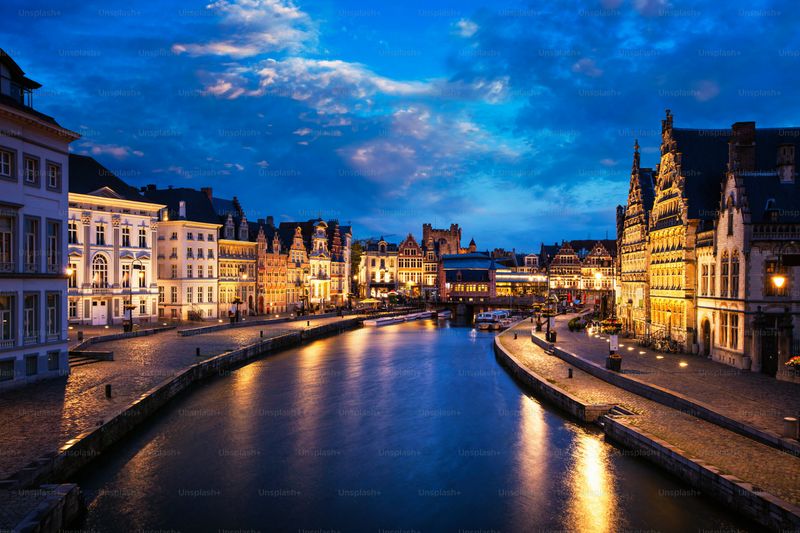
While tourists flock to Bruges, I’ve found Ghent offers similar canal-side charm with a more authentic vibe. The city center bursts with medieval architecture, including the impressive Gravensteen Castle and St. Bavo’s Cathedral housing the famous Ghent Altarpiece.
At night, the clever lighting system transforms the city into a magical wonderland. Ghent’s thriving university population keeps the atmosphere lively, with plenty of affordable restaurants and cool bars along the canals.
3. Colmar, France

Have you ever wondered what inspired Disney’s Beauty and the Beast? Many believe this Alsatian gem provided inspiration with its candy-colored half-timbered houses and flower-lined canals.
The Little Venice quarter feels like stepping into a painting, especially during spring when blooms cascade from window boxes. Colmar sits in France’s wine country, making it perfect for sampling local Rieslings and Gewürztraminers.
Don’t miss the Unterlinden Museum, home to the remarkable Isenheim Altarpiece.
4. Kotor, Montenegro

Dramatic limestone cliffs plunge into the deepest fjord in Southern Europe, creating a breathtaking backdrop for this medieval walled city. Kotor’s old town is a maze of marbled lanes, hidden squares, and centuries-old churches.
For the best views, climb the 1,350 steps up the city walls to San Giovanni Fortress. The zigzagging path rewards your effort with increasingly spectacular vistas of the bay.
Cats roam freely throughout Kotor, considered lucky protectors of this seafaring town.
5. Gdańsk, Poland
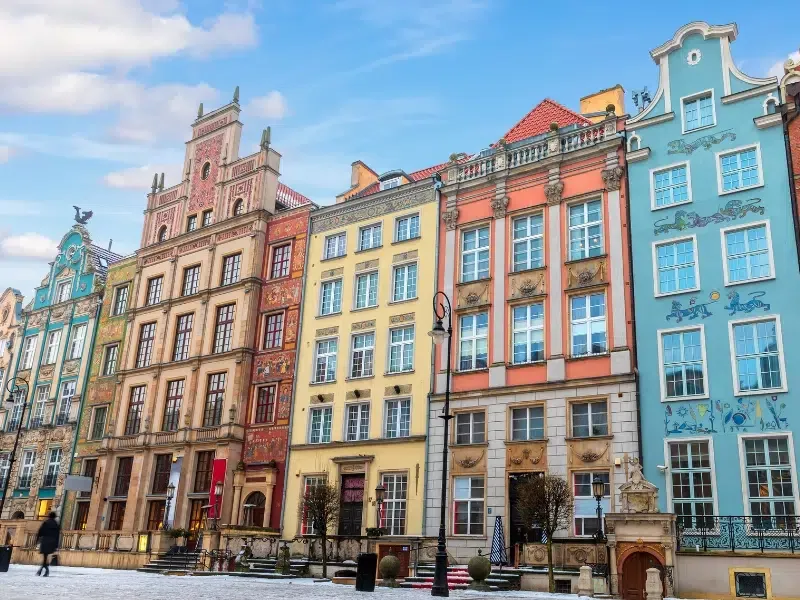
This Baltic seaport surprises visitors with its distinctive Dutch-influenced architecture and fascinating history. Though heavily damaged in WWII, Gdańsk’s old town has been meticulously rebuilt with colorful, narrow merchant houses lining its main thoroughfare.
The city’s maritime heritage comes alive at the waterfront, where you can spot amber jewelry shops – Poland is famous for this fossilized tree resin. History buffs will appreciate the European Solidarity Centre, documenting the movement that helped end communist rule.
6. Ljubljana, Slovenia

Slovenia’s capital might be the most livable city I’ve visited in Europe. Car traffic is banned in the center, leaving the riverside promenades free for cafés, markets, and pedestrians.
Dragon Bridge and Triple Bridge showcase the architectural genius of Jože Plečnik, who designed much of the city. The hilltop castle provides sweeping views of red-roofed buildings against a backdrop of distant Alps.
Green spaces abound, earning Ljubljana the European Green Capital title in 2016.
7. Valletta, Malta

Perched on a peninsula between two harbors, Valletta packs incredible history into just 0.3 square miles. The honey-colored limestone buildings glow golden in the Mediterranean sun, while steep streets lead to breathtaking harbor views.
Built by the Knights of St. John in the 1500s, this fortified city boasts ornate churches and palaces. St. John’s Co-Cathedral looks plain outside but explodes with baroque splendor inside.
Game of Thrones fans might recognize locations from King’s Landing scenes filmed here.
8. Mostar, Bosnia and Herzegovina
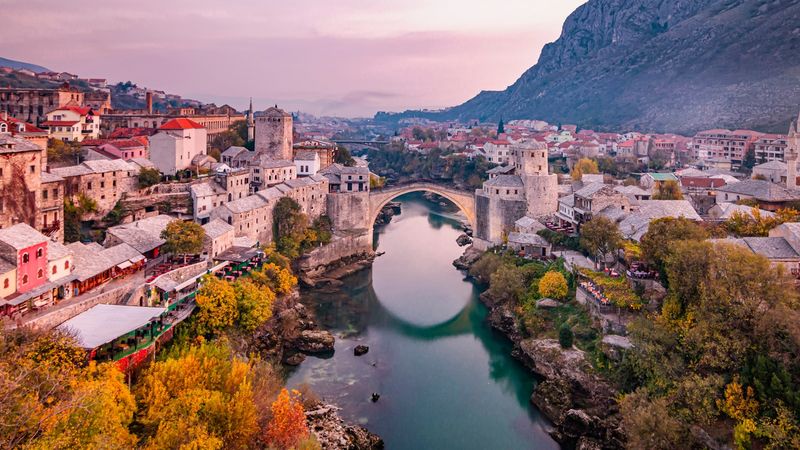
The iconic Stari Most (Old Bridge) arching gracefully over emerald waters of the Neretva River defines this enchanting city. Local divers continue a centuries-old tradition of plunging from the 24-meter-high bridge into the cold river below – for a fee from impressed tourists.
Mostar’s old bazaar feels authentically Ottoman, with coppersmiths crafting traditional coffee sets. The city bears visible scars from the 1990s war, including bullet-pocked buildings alongside restored structures.
9. Girona, Spain
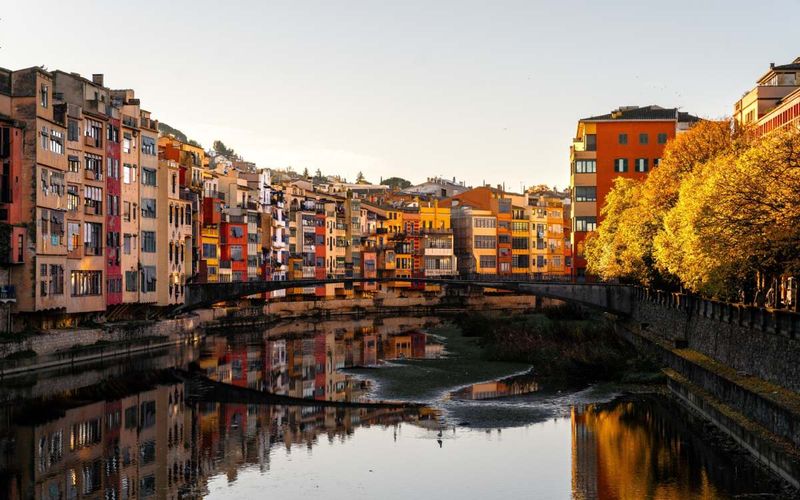
Just an hour from Barcelona lies this Catalan jewel where ancient walls encircle a remarkably preserved medieval quarter. The Jewish Quarter (Call) contains some of Europe’s best-preserved medieval Jewish heritage, with narrow, atmospheric lanes.
Game of Thrones filmed several King’s Landing and Braavos scenes here, including the famous steps of the Great Sept of Baelor. The multi-colored houses along the Onyar River create postcard-perfect views, especially from the Eiffel-designed iron bridge.
10. Bergen, Norway

Surrounded by seven mountains and fjords, Bergen combines natural splendor with colorful wooden architecture. The UNESCO-listed Bryggen wharf features distinctive gabled buildings in red, yellow and white – remnants of the city’s Hanseatic trading past.
Take the Fløibanen funicular up Mount Fløyen for panoramic views that will leave you breathless. Rain falls frequently here (locals joke there are two seasons: June and rain), giving Bergen its lush greenery.
11. Dinant, Belgium
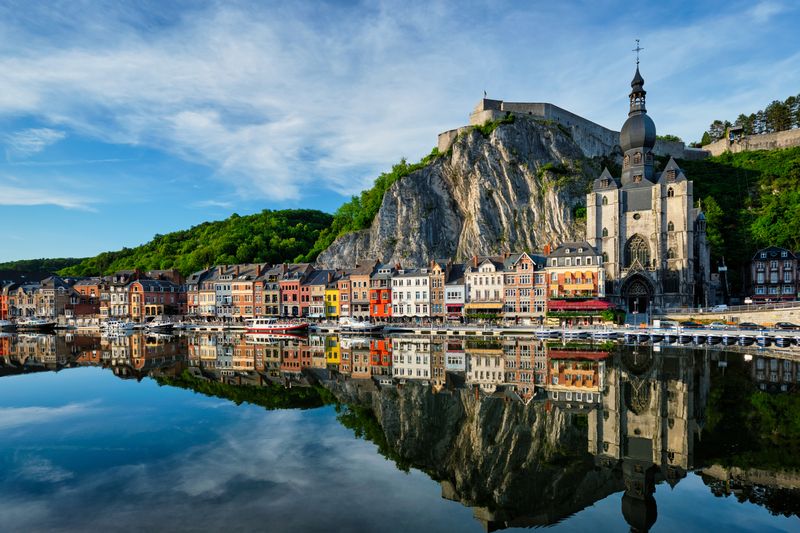
Dramatically squeezed between towering limestone cliffs and the Meuse River, tiny Dinant looks like something from a fantasy novel. The town’s skyline is dominated by its onion-domed church and the citadel perched precariously on the cliff above.
Did you know the saxophone was invented here? Adolphe Sax, the instrument’s creator, was born in Dinant in 1814. Colorful saxophone sculptures line the Charles de Gaulle bridge in tribute.
Try the local specialty – couque de Dinant – an extremely hard honey cookie pressed into decorative molds.
12. Sibiu, Romania

The houses in Sibiu’s old town seem to be watching you – their distinctive roof windows resemble eyes peering out over the streets. This Transylvanian gem maintains a distinctly Germanic character from its Saxon settlers, with three interconnected squares forming the heart of the upper town.
When darkness falls, the city takes on a magical quality with its atmospheric lighting. The Bridge of Lies, according to local legend, will creak if someone standing on it tells a lie.
13. Braga, Portugal
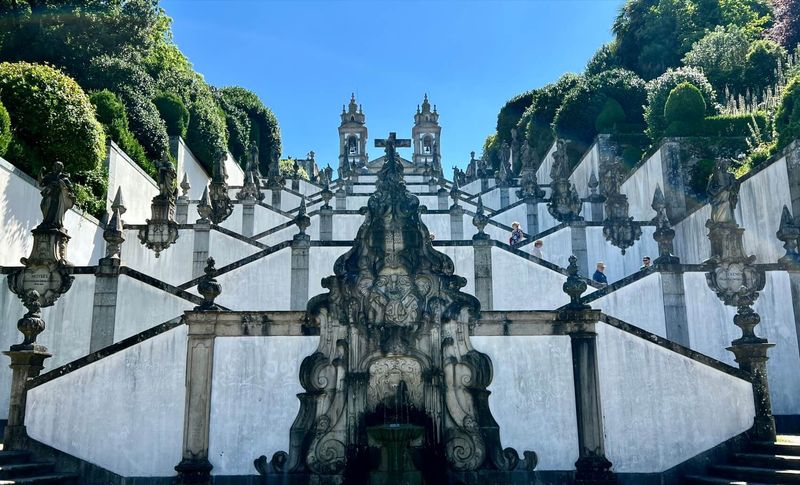
Portugal’s religious capital combines youthful energy with ancient devotion. The baroque Bom Jesus do Monte sanctuary sits atop a dramatic zigzagging staircase representing the path to spiritual enlightenment – climb all 577 steps or take the funicular railway.
In the historic center, café terraces spill onto squares dominated by grand religious buildings. Braga’s university ensures a lively atmosphere, with students filling reasonably priced restaurants and bars.
Holy Week processions here rank among Europe’s most spectacular religious celebrations.
14. Matera, Italy
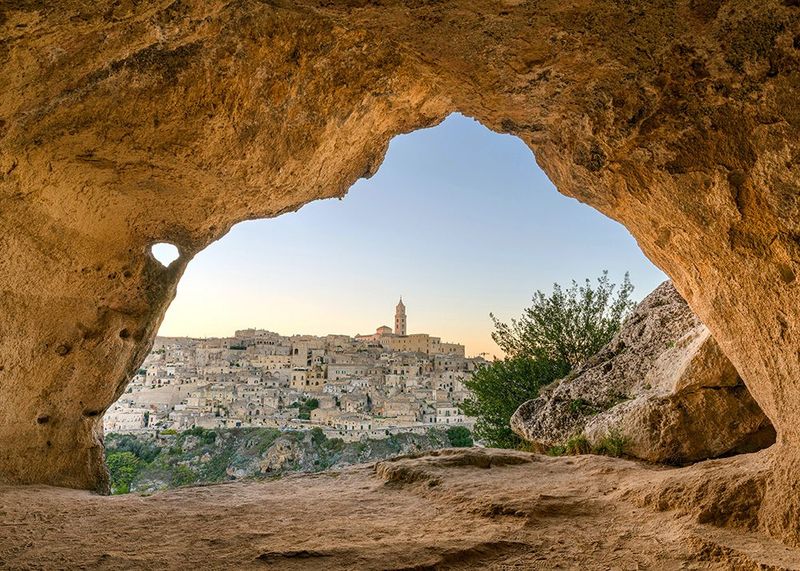
Ancient cave dwellings carved into a limestone ravine create one of Europe’s most extraordinary cityscapes. Until the 1950s, Matera was considered Italy’s “national shame” due to impoverished families living in these sassi (stone dwellings) without basic services.
Today, these same caves house boutique hotels, restaurants, and museums. Wandering the labyrinthine alleys feels like stepping back thousands of years – no wonder Matera has served as a filming location for biblical movies including The Passion of the Christ.
